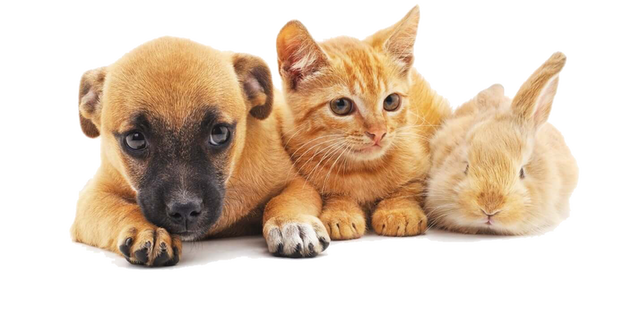Panel discussion on...
Pet food
Insect ingredients in pet food
Innovation
We see a lot of activity on the human food side in novel proteins, including cell-based and fermentation-based products. Is there similar innovation happening in the pet food arena?
Absolutely! The use of novel proteins in pet food is on the rise! Insect proteins are a highly sustainable, hypoallergenic ingredient that can be used as a partial or total protein source in pet food. There are many dog and cat foods on the market in Canada and the EU that already incorporate insect proteins. And in the US, the recent AAFCO (Association of American Feed Control Officials) approval of black soldier fly larvae meal for adult dogs has resulted in several new product launches incorporating this ingredient. Pet parents want healthy, wholesome foods for their pets, and sustainable insect options are filling that demand!
Are there any interesting developments or trends for foods other than dogs and cats?
Well, most specialty pet species consume insects as part of their natural diet. Hedgehogs, bearded dragons, tropical fish, to name a few – all readily consume insects and so the incorporation of insect-based ingredients in diets for these animals is a logical and natural way to feed these pets. Another interesting market, is the backyard chicken market. Over 10MM households in the US now have chickens as part of their family, whether they are considered “pets” or part of their family food supply, or often times both! Chickens spend a majority of their time foraging for food items, including insects! Including insect ingredients in chicken diets or even offering insects as a supplement or treat, allows for a natural food item that chickens love.
We’ve been seeing more claims regarding “functional foods” for pets. What types of data are being developed to support these claims in pet products?
Functional claims are incredibly important to the pet parent and the veterinarians that care for our pets. These can range from joint health to gut health to hypoallergenicity claims and more. Good data are needed to support these claims, which can be derived from in vitro studies, such as this study from an industry colleague demonstrating that black soldier fly larvae-derived products could reduce oxidative stress in cell culture (1). Research conducted in dogs supports improvement in gut microbiome (2), while research in cats is just beginning to demonstrate that insects can be a safe and wholesome addition to diets (3). Finally, as invasive trials may be limited in dogs and cats due to the need for tissue sampling, results may be extrapolated from model species like the pig. For example, work in pigs has shown that lauric acid, a major component of the oil produced by black soldier fly larvae, can reduce pathogenic bacteria in the GI tract (4). A review of the health promoting benefits of insect-derived ingredients in a variety of animal species has been published (5). Taken together, these data support that insect-derived ingredients can provide not only high quality nutrients, but functional properties that can optimize the health and well-being of our pets.
Consumer trends
There is an increasing consumer interest in sustainability and environmental impacts in the human food space. Are you seeing the same trends in the pet food space? What are pet food companies doing to improve sustainability and environmental impacts?
Yes, as consumers look for more sustainable products, pet food companies are providing those options. Ingredient manufacturers are being asked to provide life cycle assessments on their products, so that pet food companies can consider the environmental impacts (greenhouse gases, water and land use) of the ingredients they are using, in addition to nutritional components. Insect ingredients tend to be much more sustainable than traditional protein sources for a number of reasons: 1) insects can be farmed vertically thus increasing the amount of protein on a given piece of land; 2) insects have a very short life span so many more cycles of production can occur in one year compare to longer lived animals or plants with a single growing season; 3) 100% of the insect is edible, whereas other protein sources may require separation and further processing of components (e.g, hulls, bones, feathers) to make them digestible. Thus, when comparing the environmental impacts of insects relative to other protein sources, insects can improve the sustainability of the pet food while providing great nutritional benefits (6).
Regulation
The US regulatory environment for novel proteins in pet food is quite strict. In order to achieve approval, extensive studies must be conducted in dogs and cats, not only in adult animals, but in growing puppies and kittens, and in breeding dogs and cats. These studies must demonstrate that the ingredients are safe for long term consumption by pets. This regulatory process benefits the pet parent to help ensure ingredients are safe. But it is also very time consuming and expensive, so it slows down the opportunities for novel ingredients to be approved. It’s a delicate balancing act to ensure that new sustainable ingredients are accessible by pet food companies and their consumers, but also ensuring that what we feed to our pets is safe and wholesome. Black soldier fly larvae (protein rich meal and oil) have been the first insect ingredients to receive regulatory approval in the US based on safety dossiers submitted by commercial producers (7).
References and notes
- Mouithys-Mickalad, A.; Schmitt, E.; Dalim, M.; Franck, T.; Tome, N.M.; van Spankeren, M.; Serteyn, D.; Paul, A. Black Soldier Fly (Hermetia illucens) Larvae Protein Derivatives: Potential to Promote Animal Health. Animals 2020, 10, 941. https://doi.org/10.3390/ani10060941
- Jarett, J. K., Carlson, A., Serao, M. R., Strickland, J., Serfilippi, L., & Ganz, H. H. (2019). Diets with and without edible cricket support a similar level of diversity in the gut microbiome of dogs. PeerJ, 7, e7661.
- Do, S., Koutsos, E. A., McComb, A., Phungviwatnikul, T., De Godoy, M. R., & Swanson, K. S. (2022). Palatability and apparent total tract macronutrient digestibility of retorted black soldier fly larvae-containing diets and their effects on the fecal characteristics of cats consuming them. Journal of animal science, 100(4), skac068.
- Spranghers, T., J. Michiels, J. Vrancx, A. Ovyn, M. Eeckhout, P. De Clercq, and S. De Smet. 2018. Gut antimicrobial effects and nutritional value of black soldier fly (Hermetia illucens L.) prepupae for weaned piglets. Anim. Feed Sci. Technol. 235:33-42. doi:10.1016/j.anifeedsci.2017.08.012.
- Koutsos, E., Modica, B., & Freel, T. (2022). Immunomodulatory potential of black soldier fly larvae: applications beyond nutrition in animal feeding programs. Translational Animal Science, 6(3), txac084.
- PhI, C. P. V., Walraven, M., Bézagu, M., Lefranc, M., & Ray, C. (2020). Industrial symbiosis in insect production—a sustainable eco-efficient and circular business model. Sustainability, 12(24), 10333.
- Freel, T. A., McComb, A., & Koutsos, E. A. (2021). Digestibility and safety of dry black soldier fly larvae meal and black soldier fly larvae oil in dogs. Journal of Animal Science, 99(3), skab047.

Panelists









